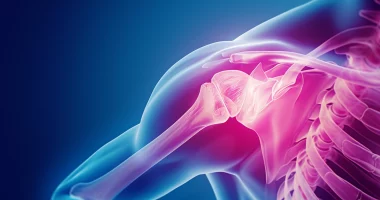Hepatitis B
Viral hepatitis B is an infectious pathology of acute or chronic course in which the liver is affected by a certain type of virus. The condition is considered extremely dangerous, as it can lead to the development of cirrhosis and other severe complications, which is a direct threat to the health and life of the patient. Treatment of acute and chronic viral hepatitis B is carried out by hepatologists, with the participation, if necessary, of other specialists (endocrinologists, allergologists, infectious disease doctors, etc.).
General information
The disease is caused by the DNA-containing hepatitis B virus, transmitted from person to person only through biological fluids (blood, semen, etc.). Experts report nine known genotypes of this infectious agent, and it is capable of mutation and integration into human DNA.
Penetrating the liver, the hepatitis pathogen accumulates in the glandular cells of the organ (hepatocytes) and begins to multiply actively, causing autoimmune tissue changes. Pathology occurs in various clinical variants, ranging from asymptomatic carriage to the most severe forms of intoxication.
The main danger of pathology is a high prevalence. According to the World Health Organization, as of 2019, the number of primary infected inhabitants of the planet exceeded 1.5 million people. The maximum number of detected cases falls on the countries of the African continent and the regions of the eastern Mediterranean.
Classification
First of all, experts distinguish between acute and chronic forms of hepatitis B and also distinguish between acute and protracted types of the disease.
- A chronic variant of the pathology is characterized by a prolonged course (more than six months) and manifested by multiple changes of hepatic tissues of varying severity with unexpressive symptomatology.
- The acute form (up to 4-6 months) is accompanied by a vivid clinical picture, where the apparent intoxication is in the foreground. There are many variants of the outcome of this type of hepatitis B, from complete recovery, which is observed in almost 90% of cases, to liver cirrhosis, cancer, chronic course, and other complications.
According to clinical manifestations distinguish subclinical, that is, asymptomatic, and expressed clinical type of pathology, when the patient reveals obvious, characteristic for this type of disease signs.
In terms of severity, viral hepatitis B can be mild, moderate, and severe, as well as in development or remission.
Reasons
The main reason for the spread of the disease is person-to-person transmission of the hepatitis B virus. There are several possible ways of infection:
- during intrauterine development, when hepatitis B from a pregnant woman is transmitted to the unborn baby through the uteroplacental bloodstream;
- during a blood transfusion from an infected patient;
- during various therapeutic and diagnostic invasive procedures, if non-sterile instruments are used or the rules of asepsis are violated;
- with unprotected intercourse;
- during injections, e.g., for intravenous administration of narcotic drugs to several people with one syringe, etc.
In some cases, infection occurs in the household when bodily fluids, such as blood or semen, come into contact with traumatized areas of another person’s skin (abrasions, scratches, cuts). Fortunately, such transmission is sporadic.
Symptoms of hepatitis B
The incubation period of the disease lasts from 42 to 180 days. It develops gradually, and the first symptoms of hepatitis B in men and women in the prejaundice stage are:
- joint pain that occurs mainly at night;
- rashes on various parts of the body, resembling urticaria;
- increased nervousness and irritability;
- decreased appetite;
- increased fatigue;
- constant feeling of weakness and brokenness, even after prolonged sleep and rest.
Some patients have mild disorders of the gastrointestinal system, manifested by flatulence, short-term diarrhea, and short-term attacks of nausea. Others complain of the darkening of urine and the lightening of feces. Gianotti-Crosti syndrome sometimes occurs, characterized by the appearance of a symmetrical, bright red rash with large spots on the hands, feet, or other parts of the body.
The next stage in the development of hepatitis B is the jaundice period, the main sign of which is a change in the skin color and the eyes’ sclera. This phase usually lasts about one month. Against the background of yellowing of the skin and mucous membranes, the general symptoms of intoxication are increasing; the patient feels increasingly worse and tired faster. In addition, at this stage, other unpleasant symptoms of hepatitis B can also join, which include:
- heaviness, acute pain in the right subcostal region;
- a taste of bitterness in the mouth;
- severe itching of the skin, which even special gels and medicinal compositions are unable to relieve;
- swelling in the face, neck, extremities;
- weight loss;
- pronounced nausea, especially after meals and in the morning;
- decreased heart rate;
- subfebrile fever
- muscle aches and spasms;
- lower blood pressure.
The further development of events depends on how quickly the treatment of hepatitis B was started, the state of the patient’s general health, and several other factors. If therapy is carried out competently and promptly, the stage of recoverybegins, characterized by normalization of skin coloration, improvement of well-being, and stabilization of stool and appetite. If treatment is not carried out or performed incorrectly, the patient refuses to comply with the doctor’s orders and take medications; the acute form turns into a chronic form. Also, the risk of complications increases manifold, which primarily include:
- cirrhosis of the liver;
- hepatic encephalopathy;
- hepatic coma (more likely to develop if hepatitis B is combined with other forms of the disease);
- sepsis;
- acute hepatic failure;
- cancerous lesions of the liver.
Signs of the chronic form of hepatitis B in women and men are:
- intermittent dull pain in the right subcostal region;
- persistent liver enlargement;
- nausea, heaviness in the abdomen after overeating fatty food or alcohol;
- pale skin.
In most cases, the chronic variant of the disease is practically asymptomatic. It is the main danger of pathology: the lack of clinical signs does not reduce the destructive effect of the disease on the liver, and each exacerbation causes more and more damage to the tissues of the organ, which as a result can lead to unfortunate consequences.
Diagnosis
The key objectives of the examination are to determine the type and cause of hepatitis B, assess the symptoms, and analyze the patient’s general condition. First, the hepatologist conducts a physical examination, during which he examines the patient’s skin and mucous membranes, palpates the liver, and collects information about past diseases, surgeries, etc.
Subsequently, a set of diagnostics is prescribed, which, depending on the indication and necessity, may include:
- general clinical blood and urinalysis;
- biochemical blood tests for albumin, bilirubin, liver enzymes, and other specific indicators;
- ultrasound of the abdomen and liver;
- liver biopsy;
- PCR or ELISA.
If the patient has concomitant pathologies or chronic systemic diseases, other specialists are also involved in the examination and diagnosis, and the list of tests can be expanded.
Hepatitis B treatment
The treatment program for viral hepatitis B acute and chronic form involves a whole set of measures aimed at eliminating the infection, restoring liver function, controlling symptoms and preventing further development of pathology.
In the acute course of the disease is indicated:
- strict bed rest;
- gentle nutrition according to a patient-specific diet;
- replenishing fluid balance by drinking plenty of fluids;
- exclusion of aggravating factors (smoking, alcohol intake, certain medications).
In mild and moderately severe forms of hepatitis, antiviral therapy is almost not used. In the case of severe disease and a high risk of complications, as well as in chronic forms, the patient is shown intravenous infusion of particular drugs based on interferon. In such situations, treatment is always carried out in hospital conditions for a long time.
In some cases, surgical treatment is required when acute or chronic hepatitis B develops complications such as ascites (fluid accumulation in the abdominal cavity) or intragastric bleeding. In severe cases, liver transplantation may be needed.
All these treatment options are available in more than 150 hospitals worldwide (https://doctor.global/results/diseases/chronic-viral-hepatitis). For example, liver transplantation can be done in 14 clinics across Germany (https://doctor.global/results/europe/germany/all-cities/all-specializations/procedures/liver-transplantation).
Prevention
Vaccination is the main way to prevent the spread of the disease, which allows for maintaining persistent immunity to hepatitis B for at least 15 years (after this period, it is recommended to undergo revaccination).
Other measures of pathology containment are:
- compliance with sanitary and epidemiological norms during invasive manipulations, blood transfusion, and processing of reusable instruments in medical and diagnostic institutions;
- avoiding unprotected sex with unfamiliar partners;
- using only personal hygiene products (razors, toothbrushes, etc.);
- refusal to take drugs.
Delivering the right information to middle and high school students is vital to prevention.
Rehabilitation
The prognosis depends on the form and severity of hepatitis B, the route of entry of the virus, the tactics of ongoing treatment, and the individual characteristics of the patient’s body. In acute liver damage, as a rule, the prognosis is favorable, except when the patient’s body is severely depleted, he is diagnosed with a lightning form of the disease, or type B is combined with other variants, such as C, D, and E.Only the attending physician can talk about any prognosis for the chronic type of the disease.


